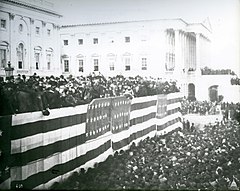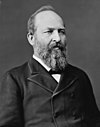
The oath of office of the president of the United States is the oath or affirmation that the president of the United States takes upon assuming office. The wording of the oath is specified in Article II, Section One, Clause 8, of the United States Constitution, and a new president must take it before exercising or carrying out any official powers or duties.

Between 73 and 79 days after the presidential election, the president-elect of the United States is inaugurated as president by taking the presidential oath of office. The inauguration takes place for each new presidential term, even if the president is continuing in office for a second term.

James A. Garfield, the 20th president of the United States, was shot at the Baltimore and Potomac Railroad Station in Washington, D.C., at 9:30 am on Saturday, July 2, 1881. He died in Elberon, New Jersey, 79 days later on September 19, 1881. The shooting occurred less than four months into his term as president. Garfield's assassin was Charles J. Guiteau, who wanted revenge against Garfield for an imagined political debt and to elevate Chester A. Arthur to the presidency. Guiteau was convicted of Garfield's murder and executed by hanging one year after the shooting.
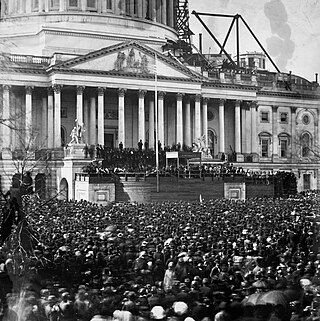
The first inauguration of Abraham Lincoln as the 16th president of the United States was held on Monday, March 4, 1861, at the East Portico of the United States Capitol in Washington, D.C. This was the 19th inauguration and marked the commencement of the first, and eventually only full term of Abraham Lincoln as president and the only term of Hannibal Hamlin as vice president. The presidential oath of office was administered to Lincoln by Roger B. Taney, the Chief Justice of the United States. John C. Breckinridge became the first outgoing vice president to administer the vice-presidential oath of office to his successor.

The inauguration of William Henry Harrison as the ninth president of the United States was held on Thursday, March 4, 1841, at the East Portico of the United States Capitol in Washington, D.C. This was the 14th inauguration and marked the commencement of the only four-year term of both William Henry Harrison as president and John Tyler as vice president. The presidential oath of office was administered to Harrison by Chief Justice Roger B. Taney. Harrison died 31 days into his term, the first U.S. president to die in office and has the shortest presidential term in American history. Tyler then succeeded to the presidency, creating precedence which would be followed seven more times before it was officially regulated through the Twenty-fifth Amendment in 1967.

The first inauguration of George W. Bush as the 43rd president of the United States took place on Saturday, January 20, 2001, at the West Front of the United States Capitol in Washington, D.C. This was the 54th inauguration and marked the commencement of the first term of George W. Bush as president and Dick Cheney as vice president. Chief Justice William Rehnquist administered the presidential oath of office at 12:01 p.m., after he administered the vice presidential oath of office as well. An estimated 300,000 people attended the swearing-in ceremony. This was the first presidential inauguration to take place in the 21st century, and the first in the 3rd millennium.

The second inauguration of Bill Clinton as president of the United States was held on Monday, January 20, 1997, at the West Front of the United States Capitol Building in Washington, D.C. This was the 53rd inauguration and marked the commencement of the second and final term of Bill Clinton as president and Al Gore as vice president. This was the last presidential inauguration to take place in the 20th century, the last in the 2nd millennium, and the first to be streamed live on the internet.

The second inauguration of Richard Nixon as president of the United States was held on Saturday, January 20, 1973, at the East Portico of the United States Capitol in Washington, D.C. This was the 47th inauguration and marked the commencement of the second and final term of both Richard Nixon as president and Spiro Agnew as vice president. Both Agnew and Nixon resigned within two years of this term. In December 1973, Gerald Ford replaced Agnew as vice president and in the following year, replaced Nixon as president. This made Nixon the first and, as of 2023, only person to be inaugurated four times as both president and vice president. Chief Justice Warren E. Burger administered both the presidential and vice presidential oaths of office. During the ceremony, Look With Pride On Our Flag, a song dedicated to President Nixon and composed by Hank Fort, was played.

The fourth inauguration of Franklin D. Roosevelt as president of the United States was held on Saturday, January 20, 1945. This was the 40th inauguration and marked the commencement of the fourth and final term of Franklin D. Roosevelt as president and the only term of Harry S. Truman as vice president. This is the only time a president was inaugurated for a fourth term; after the Twenty-second Amendment to the United States Constitution was ratified in 1951, no person can be elected president more than twice. Roosevelt died 82 days into this term, and Truman succeeded to the presidency.
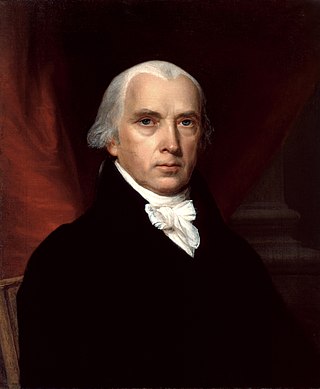
The first inauguration of James Madison as the fourth president of the United States was held on Saturday, March 4, 1809, in the chamber of the House of Representatives at the United States Capitol in Washington, D.C. The inauguration marked the commencement of the first four-year term of James Madison as president and the second term of George Clinton as vice president. The presidential oath was administered by Chief Justice John Marshall. The President wore a 100% American-made wool suit, and the first official inaugural ball occurred at Long's Hotel, with ticket prices being $4. Clinton died 3 years, 47 days into this term, and the office remained vacant for the balance of it. Clinton was the first vice president to die in office.

The second inauguration of James Madison as president of the United States was held on Thursday, March 4, 1813, at the United States Capitol in Washington, D.C. The inauguration marked the commencement of the second four-year term of James Madison as president and the only term of Elbridge Gerry as vice president. The presidential oath was administered by Chief Justice John Marshall. Gerry died 1 year, 264 days into this term, and the office remained vacant for the balance of it.

The inauguration of William Howard Taft as the 27th president of the United States was held on Thursday, March 4, 1909, at the Senate chamber inside the United States Capitol, Washington, D.C., instead of the regular East Portico due to blizzard. This was the 31st inauguration and marked the commencement of William Howard Taft's only term as president and James S. Sherman's only term as vice president.

The second inauguration of William McKinley as president of the United States was held on Monday, March 4, 1901, at the East Portico of the United States Capitol in Washington, D.C. This was the 29th inauguration and marked the commencement of the second and final term of William McKinley as president and the only term of Theodore Roosevelt as vice president. McKinley died 194 days into this term, and Roosevelt succeeded in the presidency.

The inauguration of Zachary Taylor as the 12th president of the United States was held on Monday, March 5, 1849, at the East Portico of the United States Capitol in Washington, D.C., and was the second instance of an inauguration being rescheduled due to March 4 falling on a Sunday, the Christian sabbath. This was the 16th regular inauguration and marked the commencement of the only four-year term of both Zachary Taylor as president and Millard Fillmore as vice president. Taylor died 1 year, 126 days into this term, and Fillmore succeeded to the presidency. The presidential oath of office was administered by Chief Justice Roger B. Taney. Inauguration Day started off being cloudy with snow flurries, but turned to heavy snow during the inaugural balls.

The inauguration of Franklin Pierce as the 14th president of the United States was held on Friday, March 4, 1853, at the East Portico of the United States Capitol in Washington, D.C. This was the 17th inauguration and marked the commencement of the only four-year term of both Franklin Pierce as president and William R. King as vice president. Chief Justice Roger B. Taney administered the presidential oath of office. Pierce affirmed the oath of office rather than swear it, and was also the first president to recite his inaugural address from memory.
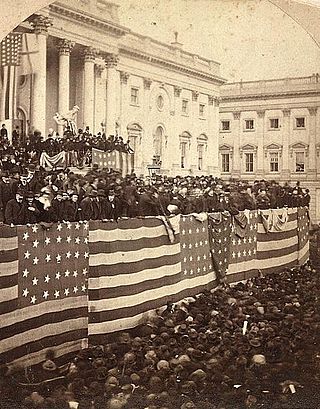
The inauguration of Rutherford B. Hayes as the 19th president of the United States took place publicly on Monday, March 5, 1877, at the East Portico of the United States Capitol in Washington, D.C. This was the 23rd inauguration and marked the commencement of the only four-year term of Rutherford B. Hayes as president and William A. Wheeler as vice president.

The second inauguration of Ulysses S. Grant as president of the United States was held on Tuesday, March 4, 1873, at the East Portico of the United States Capitol in Washington, D.C. This was the 22nd inauguration and marked the commencement of the second and final four-year term of Ulysses S. Grant as president and the only term of Henry Wilson as vice president. Chief Justice Salmon P. Chase administered the presidential oath of office. This was one of the coldest inaugurations in U.S. history with 16 °F (−9 °C) at noon, and the inaugural ball ended early when the food froze. Vice President Wilson died 2 years, 263 days into this term, and the office remained vacant since there was no constitutional provision to fill an intra-term vice-presidential vacancy until the Twenty-fifth Amendment in 1967.

At 2:15 a.m. Eastern Time on September 20, 1881, Chester A. Arthur was inaugurated the 21st president of the United States. The inauguration marked the commencement of Chester A. Arthur's only term as president. The presidential oath of office was administered by New York Supreme Court Justice John R. Brady at Arthur's private residence in New York City. Two days later, Arthur underwent a second inauguration ceremony in Washington, D.C., with the oath administered by Morrison Waite, the Chief Justice of the United States. Arthur became president following the death of his predecessor James A. Garfield, who had been assassinated by a troubled office seeker, Charles J. Guiteau.

The first inauguration of Grover Cleveland as the 22nd president of the United States took place on Wednesday, March 4, 1885, at the East Portico of the United States Capitol in Washington, D.C. This was the 25th inauguration and marked the commencement of the first four-year term of Grover Cleveland as president and the only term of Thomas A. Hendricks as vice president. Hendricks died 266 days into this term, and the office remained vacant since there was no constitutional provision which allow an intra-term vice-presidential office filling; it would be regulated by the Twenty-fifth Amendment in 1967.

The inauguration of Warren G. Harding as the 29th president of the United States was held on Friday, March 4, 1921, at the East Portico of the United States Capitol in Washington, D.C. This was the 34th inauguration and marked the commencement of Warren G. Harding's only term as president and of Calvin Coolidge's only term as vice president. Harding died 2 years, 151 days into this term, and Coolidge succeeded to the presidency.
